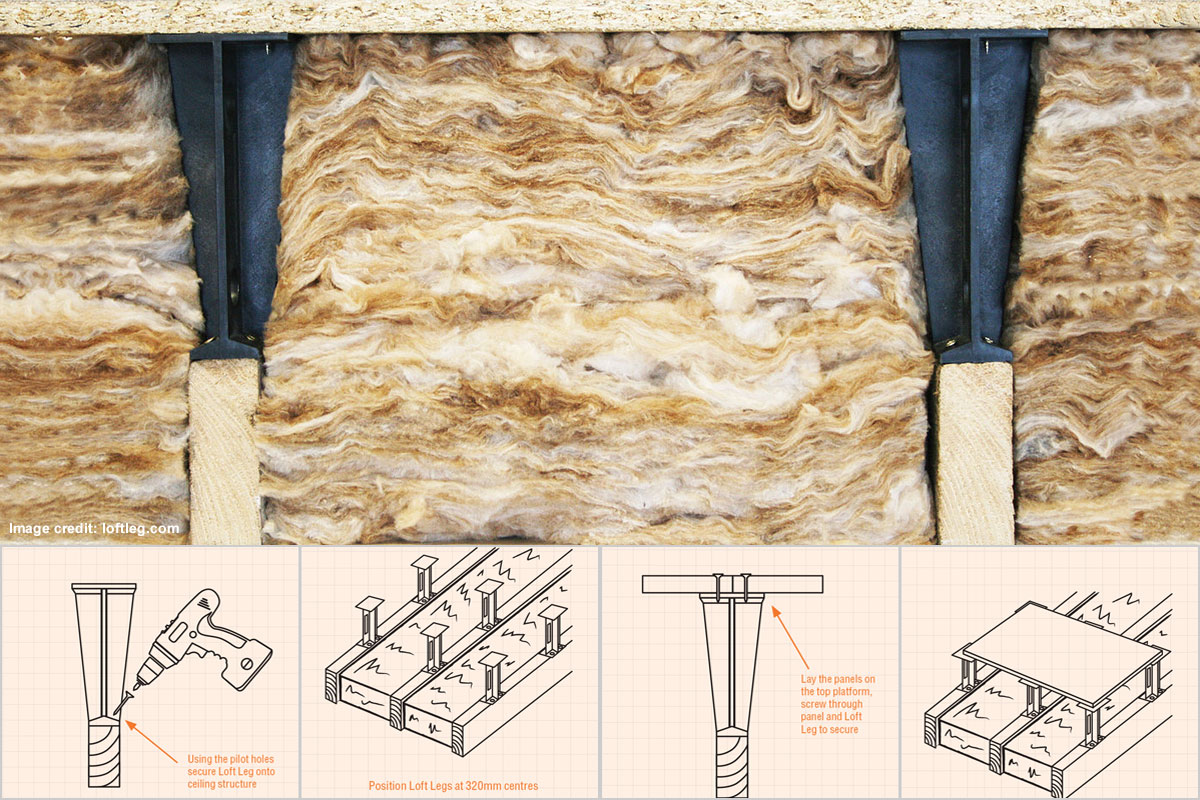
Easy DIY Projects: How to Create Storage Space by Boarding Your Loft
Author Chigwell Building & Joinery
Date 28/03/17
The Simple Cost Effective Home Storage Solution
Storage is always a problem no matter what size home you live in. There’s never enough space to store all the clutter and items you simply refuse to part with.
In most cases, your loft provides the perfect opportunity to create useful storage space that is easily accessible, dry and cost effective, meaning you can store away items out of sight and get access to them only on the odd occasions when they’re really needed.
The great thing about boarding your loft as it does not usually require planning consent and for even the most basic of DIYers, it’s a fairly easy task to undertake. Here’s how to board your loft using standard MDF loft boards or alternatively, 18mm plywood sheets.
Loft Access
Before you even lay a single board, you firstly need to ensure you have adequate loft access to bring the required boards up into the space. Most loft hatches are fairly tight so measure the widest point across the diagonal length of the opening and ensure any boards you buy or not wider than this width.
Standard loft boards usually measure between 320mm to 600mm in width, so choose only those that will fit through the hatch.
Measuring the Floor Space
Next you need to work out the floor space you want to cover with boards. In most cases, it’s not practical to board the entire loft space, especially under the eaves as the roof pitch makes the space practically unusual for storing items, let alone walking.
So measure just the areas you feel will be used for either walking on or storing items that you need to gain access to. Then simply measure the length and multiply that by the width, giving you your square meter coverage requirements.
Now all you need to do is shop for an adequate amount of boards to cover that area. Remember to overcompensate to cater for cutting odd pieces that may use partial boards and create wastage.
Ways of Boarding
There are two ways to traditionally board a loft.
In the past, most home DIYers would attach loft boards directly onto the roof joists, covering up the loft insulation. Nowadays, this is not recommended as this places strain on the joists but also, compresses your roof insulation, making it far less effective.
There are no rules or regulations to suggest you cannot take this approach if this is your preferred route however, most experts now agree this is not the ideal solution.
Instead, most agree that using loft legs is better as this allows for ample room above the loft insulation and creates a sturdy raised base onto which you can build your loft floor. It also means that access to electrical cables and pipework is far easier for contractors if the need arises.
Installing Loft Legs
Most loft legs are very easy to attach to the existing roof joists. Simply roll back any insulation between the joists temporarily and screw the legs directly into the timber using 30mm screws and space them 400mm apart in either direction, ensuring they are accurately spaced. This will ensure your loft boards sit exactly as they were intended on the legs and will give you a perfect sturdy finish.
Installing the Loft Panels
Start at one corner and lay your loft panels directly on top of the loft legs at 90 degree angles to the direction of the ceiling joists. Then when in place and laid square, attach them to the loft legs using the same 30mm screws.
Lay them in rows going across the width of the roof first and then move onto the next row as you go.
Safety First
Remember, when laying loft panels, always ensure you only step onto the existing roof joists and the rest of the roof will not take your weight.
Always wear gloves as roof joists are unfinished timbers with splinters and wear safety glasses when cutting, drilling or nailing boards to the loft joists. If in doubt, ask for help as roof spaces can be very tight so cutting and placing boards is much easier with a spare pair of hands.

